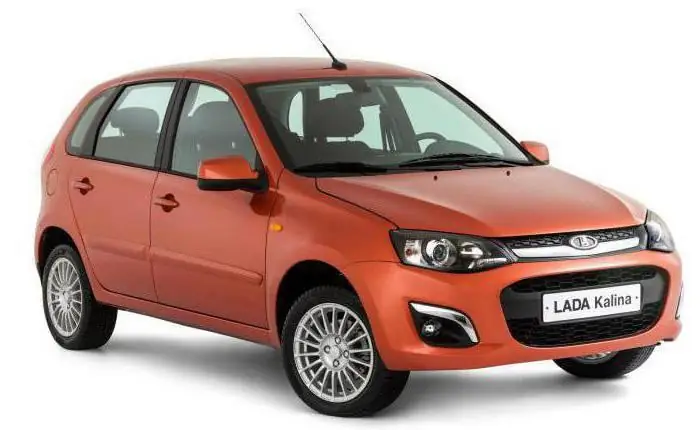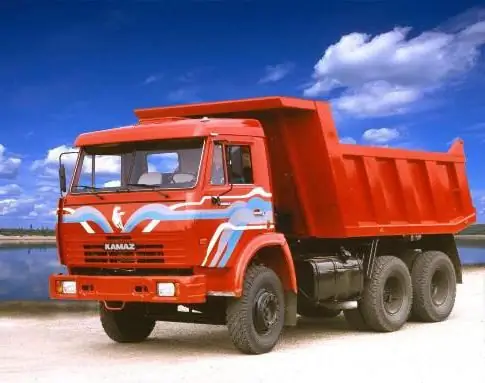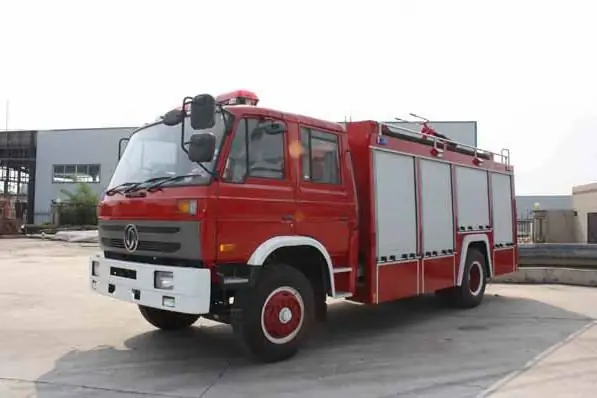2025 Author: Erin Ralphs | [email protected]. Last modified: 2025-01-22 21:14:17
Special fire trucks today are constantly being improved, this helps to increase the efficiency of various tasks. There are many firefighting models out there, it's worth looking into the most common ones.

Fast response transport
The main purpose of such machines is to ensure the delivery of people, rescue and technical equipment to the scene. They are indispensable in the implementation of rescue operations and elimination of fires in residential buildings. Special fire trucks are used in temperate climates with temperatures ranging from -35 to +45 degrees. Their main components are as follows:
- electrotechnical equipment for work;
- fire fighting equipment;
- body part;
- chassis;
- foam and water tanks.
It is also worth noting the equipment in the form of special sliding shelves on which the equipment is located. Fire fighting equipment and rescue equipmentare located in the body part and are fixed with reliable attachment points. There is additional space for equipment on the roof of the vehicle.
Equipment typically consists of the following:
- firefighter uniform;
- monitors;
- fire hoses and faucets;
- ventilators;
- hydraulic tools;
- foam generation equipment;
- special pumps;
- respiratory protection;
- water-foam weapons.

Gas and smoke protection machines
Special fire trucks of this type provide the delivery of lighting fixtures, specialized tools, power supply to electrical equipment, systems to ensure the protection of the fire brigade to the place of emergency. The equipment consists of several functional parts:
- lighting retractable mast equipped with spotlights;
- control system;
- power tools;
- fire brigade cabin and chassis;
- specialized devices for work in force majeure conditions;
- electrotechnical equipment.
Cab with combat crew and the body in which the equipment is located are mounted on the chassis frame. Among the distinctive features, it is worth noting the equipment of the optical-acoustic type “South Ural”.
Fire transport with containers
Used to equip fire brigades with mobile, multifunctional rapid response systems. Destinedspecial fire trucks for extinguishing fires in oil, gas and chemical industries, in multi-storey buildings, archives and museums. The complex is also suitable for rescue operations. Cars of this type are indispensable in emergency situations, subject to low temperatures and during the elimination of protracted fires.
A special container carrier is installed on the chassis, providing a high level of mobility, and a multi-lift is used to deliver, unload and return to the base of the container of the required type.
Operation can be carried out at temperatures from +40 to -50 degrees. The package includes several standard containers with established dimensions and a set of fire extinguishing equipment.

Combined extinguishing transport
Fire rescue vehicles are required for the following tasks:
- supplying fluid from a natural reservoir or existing reservoir;
- transportation of firefighters, technical equipment and fire fighting equipment;
- supply of special powder formulation;
- foam supply from tank or tank mounted on chassis.
An integral element is a signal specialized installation. The transport is at the emergency site until the fire is completely eliminated. Vacuum equipment provides filling of tanks with foam and water. Fire equipment of a standard type is placed on the roof of the car, in built-in compartments and in thebody. Most of the equipment is represented by tools for supplying extinguishing powder, mechanical foam and water.

Sleeve machines
Pump-hose fire trucks are primarily needed to supply a large volume of water, while the transport can be located at a considerable distance from the fire. Among the main functions, it is also worth noting the formation of a special solution from foam concentrate and water in a set component ratio.
Metals resistant to rust development are used as materials for manufacturing. The equipment is represented by the following items:
- electronic foam sensor located on the pump;
- drainage equipment with ball valve device;
- filling line with check valve;
- overflow pipe, completed with a device to prevent the occurrence of pressure that does not correspond to the set level;
- longitudinal and transverse breakwaters.
Operation with foam concentrates of any kind is possible. It is supplemented with elements that ensure the filling of the tank, its flushing and heating, while replenishment can be made from a foaming electric pump or a third-party source. The surface of the container is covered with a heat-insulating composition, its thickness is up to 1 cm.

AC-40 tank truck
The purpose of transport is to deliver special equipmentand personnel to the scene, as well as fire extinguishers and their supply to the fire.
Foam and liquid tanks are installed on the chassis. To eliminate the localization of fire, fire extinguishing agents are used both from water supply systems and from tanks and reservoirs. The body part is distinguished by high anti-corrosion and strength characteristics, light weight due to the use of aluminum sheets. It is worth noting that the new AC-40 body is supplemented with folding steps, which make it easier to access the equipment located on the upper compartments.

Auto ladders
The ladder provides work on the upper floors of buildings, extinguishing fires with mechanical foam or water, supplemented with foam generators and fire monitors, evacuation of victims and valuables from high-rise buildings. Also, with the knees folded, it is used to transport cargo by crane. Fire ladders are suitable for work in various climatic conditions. The standard operating temperature range is from +40 to -40 degrees. Extended temperature operation is possible subject to certain rules.
All nodes and mechanisms are installed on the base frame and platform, which are placed on the chassis. The hydraulic pump drive is powered by the chassis power unit.
Ladder platform
The platform is of box structure, solid skin and made of angle steel. The frame spars act as the basis for the frame made ofmetal. The platform consists of several parts - two side, rear and front. Additionally, there is a container for transporting removable equipment. The steps are located on the sides of the structure, with the help of special doors access to the gas tank and batteries is provided.
The platform is equipped with a supporting front frame located behind the driver's cab. It is attached in two places: on the frame and frame spars. The frame provides support for the front of the knees, their position is fixed with special guides. The vertical movement of the knee set is prevented by spring clips located on the side guides. The locking hook is needed to keep the knees from extending during the movement of the ladder, it is in contact with the supporting front frame. The knee is unhooked during the unhooking process, while the hook is lowered by its own weight.

Lifts
Fire articulated aerial platforms are required for high- altitude work in the process of extinguishing a fire. They are used not only for lifting personnel, but also for floodlighting and supplying cargo. The design consists of the following parts:
- control system;
- mechanism for turning and lifting;
- lift links;
- support base;
- chassis.
The lift can be controlled from the cab or from outside the vehicle using a remote control. The design has an installeda comb for simultaneous feeding of four barrels or a fire barrel of the type PLS-20. The cradle is equipped with heat protection.
Fire telescopic car lifts are equipped with automatic safety mechanisms that stop movement when the permissible angle of lowering and lifting is exceeded. Compared to automatic ladders, they are more manoeuvrable. Today, as a rule, Russian-made lifting devices are used, with a height of 30 and 17 meters. The base hydraulic system is placed on the car chassis, it blocks the springs and turns on the supports.
Recommended:
Cargo ZIL-431412. ZIL: special equipment and trucks

Zil 130 was produced for almost 20 years during the Soviet Union. In 1984, it was replaced by Zil 431410. And although outwardly they did not differ much, nevertheless, model 431410 became a newer car, with greater capabilities, and it is precisely this that many mistakenly still call the 130th
Car fire extinguishers: expiration date. Types of car fire extinguishers

All drivers must adhere to traffic rules. But in addition to the rules, there is also a law that provides for certain duties and requirements for drivers. So, it is forbidden to drive a car if it does not have a first-aid kit or a fire extinguisher. In addition, you need to know the expiration date of the car device, because if it is overdue, the traffic police inspector can issue a fine. Yes, and if necessary, such a device will be useless
Russian cars: cars, trucks, special purposes. Russian auto industry

The development of the Russian car industry, which in Soviet times became famous thanks to the following cars: Moskvich and Zhiguli, began in the 19th century. Before the emergence of the Union of Republics, the industry got up on its feet several times and immediately fell, and only by 1960 it began to live to the fullest - mass motorization was launched. From the crisis that followed immediately after the collapse of the USSR, with difficulty, but the Russian auto industry got out
KamAZ lineup: truck tractors, flatbed trucks, mining and construction dump trucks

KamAZ lineup includes several types of vehicles. These are flatbed trucks, truck tractors, dump trucks. The Kama Automobile Plant also produces the KamAZ universal chassis, on which various add-ons can be mounted: fire modules, cranes, special technical equipment and much more
Main fire trucks: types, characteristics

The first fire trucks appeared in Russia in 1904. At that time, these were fairly simple and reliable means. They had simple equipment and could carry up to 10 people. But progress does not stand still. The installed equipment has been modernized, as well as the equipment itself. It has become more spacious, efficient and reliable. Let's look at the main fire trucks, their features and key differences

